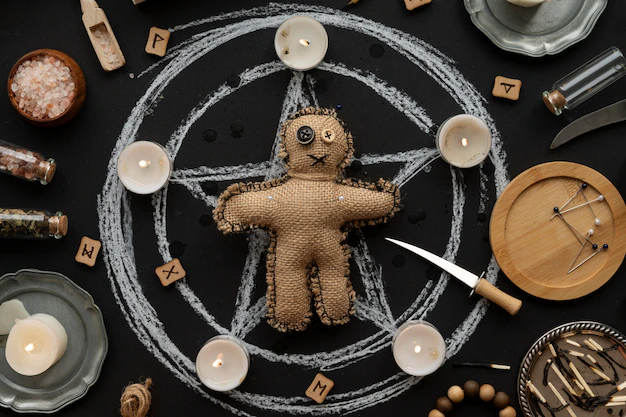WWE is synonymous with high-octane drama, thrilling matches, and electrifying surprises. The company’s ability to adapt and innovate has long been a cornerstone of its success. This adaptability was on full display recently in Orlando, Florida, where WWE reportedly altered several matches following a SmackDown event. While changes to match lineups are not uncommon in the wrestling world, they often spark intrigue and speculation among fans.
In this article, we explore the reported match changes that occurred after SmackDown in Orlando, delve into possible reasons for these adjustments, and examine their implications for both WWE and its passionate fanbase.
What Happened in Orlando?
The SmackDown event in Orlando showcased WWE’s usual blend of storytelling and athleticism, with storylines like The Bloodline saga and the rise of GUNTHER captivating audiences. However, once the televised portion of the show concluded, the evening’s dark matches—untelevised matches meant to entertain the live audience—reportedly underwent significant last-minute changes.
Original Lineup
Reports suggest that the original lineup included:
- A singles match featuring Sami Zayn versus Ludwig Kaiser.
- A triple threat match for the World Heavyweight Championship involving GUNTHER, Jey Uso, and Damian Priest.
Revised Lineup
According to sources, the revised matches included:
- Sami Zayn facing Santos Escobar instead of Ludwig Kaiser.
- The triple threat match for the World Heavyweight Championship was modified to a singles match between GUNTHER and Jey Uso. This match later evolved into a tag team match, with Damian Priest teaming up with Jey Uso to take on GUNTHER and Ludwig Kaiser of Imperium.
Why Were the Matches Changed?
WWE is known for its fluid and dynamic approach to event planning, and last-minute changes are often made for a variety of reasons. While WWE has not issued an official statement explaining the changes in Orlando, there are several plausible factors:
1. Enhancing Fan Experience
Dark matches are primarily meant to reward the live audience with exclusive, crowd-pleasing moments. Adjusting lineups to include popular superstars or exciting matchups can enhance the live experience and ensure fans leave the arena satisfied.
2. Talent Availability
Wrestlers frequently deal with injuries, fatigue, or unforeseen circumstances that may impact their ability to perform. In such cases, WWE may need to adjust the lineup to accommodate these challenges.
Advancing Storylines
Last-minute changes can also be driven by creative decisions aimed at advancing ongoing storylines. For example, pairing Jey Uso and Damian Priest as an unlikely tag team could be a way to plant seeds for future story developments.
4. Testing Chemistry
Dark matches often serve as an experimental ground where WWE tests the chemistry between certain wrestlers or gauges audience reactions to potential rivalries. The tag team match involving Jey Uso and Damian Priest may have been a trial run for future feuds or alliances.
Reactions from the WWE Universe
WWE fans are no strangers to surprise changes, but reactions are always varied. In Orlando, the altered lineup elicited mixed responses from those in attendance and online.
- Positive Reactions: Many fans appreciated the unpredictability of the revised matches, particularly the unique pairing of Jey Uso and Damian Priest. For some, the changes added a fresh dynamic to the event, making the night even more memorable.
- Criticism: Conversely, some fans were disappointed that the original triple threat match for the World Heavyweight Championship was scrapped. Such high-profile matches often generate significant excitement, and changes can sometimes deflate expectations.
The Implications for WWE
Adjustments like the ones made after SmackDown in Orlando reflect WWE’s ability to think on its feet and adapt to ever-changing circumstances. These changes have broader implications for the company’s operations and fan engagement strategies:
1. Keeping Fans Engaged
Last-minute changes create an air of unpredictability, keeping fans on their toes. This spontaneity is part of WWE’s appeal, ensuring that no two events are ever the same.
2. Flexibility in Booking
By showcasing its ability to pivot and deliver compelling alternatives, WWE demonstrates the value of having a flexible booking strategy. This ensures that even when unforeseen circumstances arise, the show can go on without compromising quality.
3. Gauging Audience Reactions
Revised matchups provide WWE with valuable insights into fan preferences. Positive responses to the revised matches in Orlando may influence future booking decisions or rivalries.
Historical Context: WWE’s Adaptability
WWE has a long history of making adjustments on the fly. Whether due to injuries, creative shifts, or unforeseen incidents, the company has consistently adapted to deliver engaging entertainment. Notable instances include:
- The last-minute change at WrestleMania 30, where Daniel Bryan was added to the main event due to overwhelming fan support.
- Adjustments to major storylines following injuries to top stars like Roman Reigns or Seth Rollins.
These examples highlight WWE’s resilience and creativity in handling unexpected challenges, reinforcing its reputation as a leader in live entertainment.
What’s Next for WWE?
The changes in Orlando underscore WWE’s commitment to delivering high-quality experiences for its fans, both in the arena and at home. Moving forward, fans can expect WWE to continue pushing the envelope with bold creative choices and dynamic matchups. Additionally, the feedback from events like the one in Orlando may shape how WWE approaches dark matches and live shows in the future.
Conclusion
The reported changes to matches after SmackDown in Orlando offer a glimpse into WWE’s behind-the-scenes adaptability and decision-making process. While such adjustments can spark mixed reactions, they ultimately reflect WWE’s commitment to delivering engaging, unpredictable entertainment.
For the WWE Universe, these moments of spontaneity serve as a reminder of why professional wrestling remains one of the most thrilling forms of live entertainment. Whether you cheer or critique the changes, one thing is certain: WWE knows how to keep its fans talking—and that’s what keeps the excitement alive.










